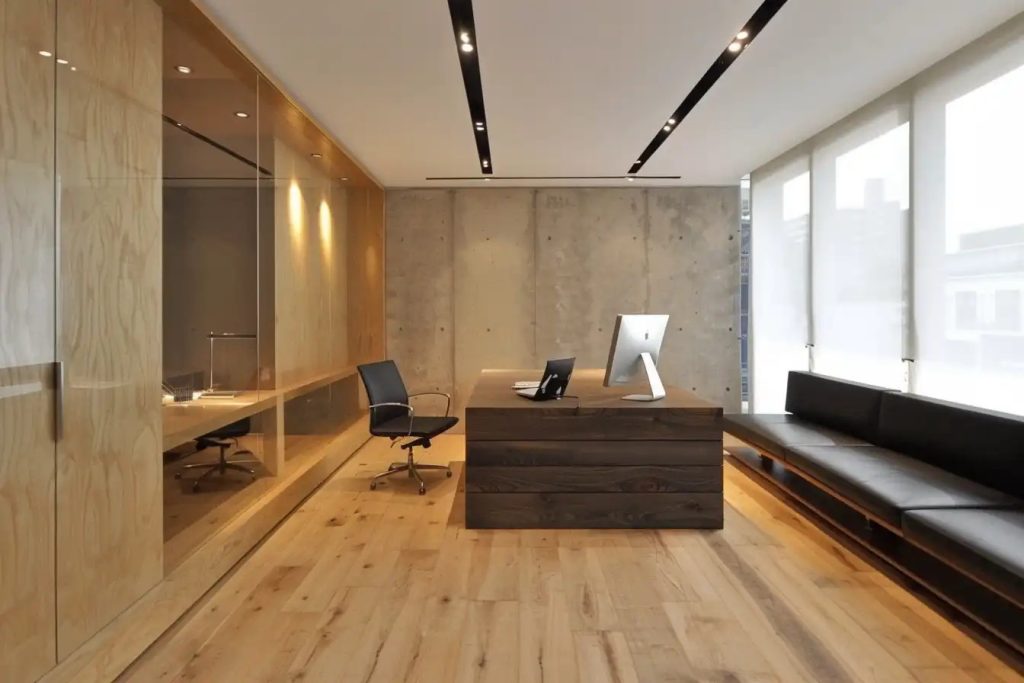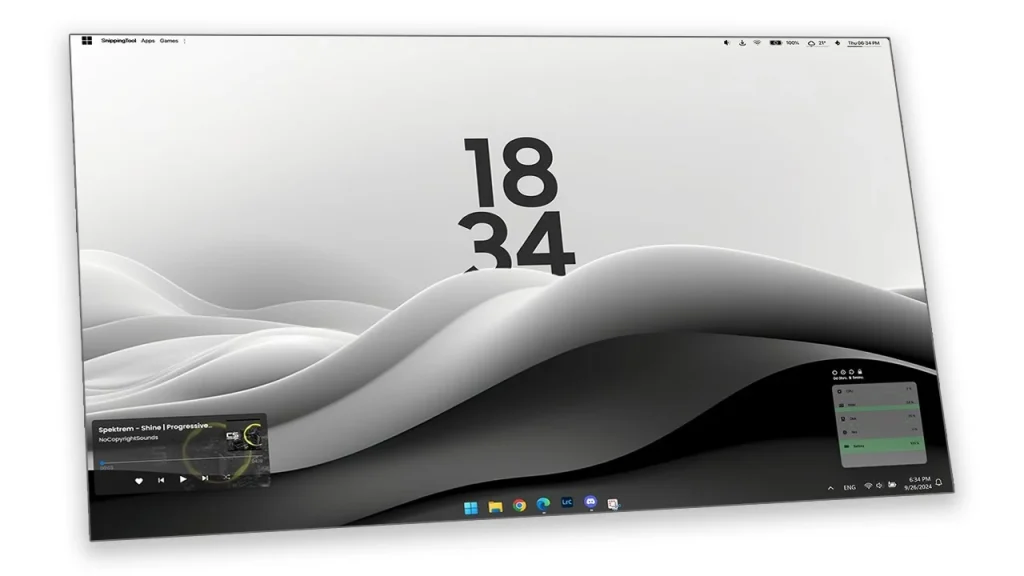Boost Work Productivity How Minimalism Transforms Your Workspace

Introduction
In a world where distractions lurk at every corner, finding effective methods to enhance productivity is not just a desire, but a necessity for many professionals. Enter Minimalism, a philosophy that casts a spotlight on simplicity and intentionality. This approach offers profound strategies to craft a more focused workspace, allowing individuals to excel in their professional lives. By deliberately stripping away what is non-essential, individuals have the opportunity to design environments that are not just functional, but also fuel concentration and creativity.
Clutter can be more than an eyesore; it can stifle our ability to think clearly. Studies suggest that a disorganized workspace can lead to decreased productivity and increased stress levels. This is where minimalism offers a refreshing perspective. By adopting minimalist principles, one can experience several significant benefits:
- Reducing stress levels through a cleaner environment. A neat workspace can help calm the mind, creating a sense of serenity and control.
- Enhancing clarity of thought by eliminating distractions. With fewer items vying for attention, the mind can focus better on the task at hand.
- Promoting better organization through deliberate choices. A mindful selection of tools and resources ensures everything has its place, reducing time spent searching for items.
In the following sections, we will delve into the Top 5 Minimalism Strategies that hold the power to transform your workspace into a sanctuary of productivity. Prepare to discover how these practices can shepherd you toward achieving your professional goals with greater ease and focus. These strategies will serve as a beacon, guiding you on a journey to explore how simplifying your environment can lead to profound professional development. Whether working from a home office or a bustling corporate setting, these insights promise to pave the way for heightened efficiency and fulfillment.
Top 5: How Minimalism Can Help Create a More Productive Workspace
In today’s fast-paced world, workplace productivity is a priority for many. Minimalism, a philosophy that champions simplicity and the elimination of excess, may be the key to creating a more productive work environment. This article explores five ways minimalism can transform your workspace, enhancing your efficiency and mental clarity. Let’s delve into the transformative power of minimalism!
5. Reduction of Visual Stimuli
One of the foundational principles of minimalism is the reduction of visual stimuli. In a workspace cluttered with objects, distractions are inevitable. Open windows, scattered post-it notes, and accumulated objects can overwhelm your mind and make it difficult to concentrate. By opting for a more organized and clutter-free space, you allow your brain to focus on the tasks at hand.


Consider implementing the following strategies to minimize distractions and foster focus:
- Declutter your desk of any unnecessary items that do not directly relate to your current tasks.
- Organize both digital and physical documents; ensure that your files and folders are logically and efficiently stored.
- Use a neutral color palette in your workspace to create a calming atmosphere conducive to productivity.
These changes, though simple, can have a profound impact on your productivity by reducing unnecessary stimuli and allowing your mind to focus on what truly matters.
4. Improved Physical Organization
A minimalist workspace offers a clear organizational structure. When you keep only what you truly need, it becomes easier to know where everything is located. This not only saves time searching for materials but also makes the environment more pleasant and inviting.
Physical organization extends beyond a clean desk to include storage solutions and object arrangement. Here are some tips for achieving effective organization:
- Use desk organizers to keep frequently used items within reach.
- Implement an efficient filing system by categorizing documents according to priority and function.
- Minimize electronic equipment to avoid unnecessary clutter, opting instead for a functional setup with essential devices.
By streamlining your workspace, you allow creativity to flourish and enhance your work efficiency.
3. Promotion of Sustainable Focus
In minimalist environments, focus is naturally promoted. The reduction of objects and simplification of space helps individuals feel less overwhelmed and more empowered to delve into their tasks. A clean, orderly space signals your mind that it’s time to focus and work.
With fewer physical distractions, you can dedicate more attention to producing quality work. Adopting a minimalist environment can also aid you in resisting the temptation to get sidetracked with non-urgent distractions, such as social media or emails.
To promote sustainable focus, ensure that your workspace is solely equipped with essential tools and resources, prioritizing quality over quantity. This disciplined setup fosters a conducive environment for maintaining undivided attention on your work.
2. Enhanced Mental Clarity
Minimalism isn’t just about physical space; it can also clear your mind. Clutter and excessive information can lead to stress and mental confusion. A workspace that embodies simplicity can result in greater mental clarity and improved decision-making skills.
Improving mental clarity can be achieved through several intentional practices:
- Set simple and achievable daily goals to maintain focus and direction.
- Practice mindfulness by taking breaks to recharge and refocus your mind.
- Develop a space that encourages introspection and concentration, free from unnecessary clutter.
By fostering an environment that supports mental clarity, you contribute to an overall increase in productivity and well-being.
1. Creation of an Inspiring Space
At the top of our list, minimalism is vital for the creation of an inspiring space. In an environment where simplicity reigns, you can customize what truly matters and surround yourself with items that bring motivation and joy. A space that reflects your personal style and values can become a catalyst for creativity and innovation.
To maximize inspiration in your minimalist workspace, consider the following:
- Add design elements that resonate with your personality and make the space uniquely yours.
- Incorporate items that enhance your mood, such as plants or inspiring art pieces.
- Leave room for personal touches that ignite your creativity and keep you motivated.
By intentionally crafting an environment that inspires, you set the stage for greater innovation and productivity in your work life.
Incorporating minimalism into your workspace isn’t just about having less. It’s about making room for more—more productivity, creativity, and peace of mind. By embracing simplicity and order, you create a fertile ground for both personal and professional growth.
| Advantages | Details |
|---|---|
| Enhanced Focus | A minimalistic workspace reduces distractions, allowing for increased concentration on tasks at hand. This clarity helps improve productivity and effectiveness in completing projects. |
| Improved Organization | Minimalism promotes a well-organized environment, where essential tools and resources are easily accessible. This systematic approach can reduce time spent searching for items, enhancing overall workflow. |
| Stress Reduction | A decluttered space has been shown to lower stress levels. By minimizing chaos in the physical space, mental clarity is fostered, which can translate to better decision-making and creativity. |
| Energy Efficiency | A minimalist environment can lead to reduced energy usage. By focusing solely on essential items, the energy spent on maintaining a cluttered workspace is eliminated, promoting a more sustainable approach to work. |
Frequently Asked Questions on Minimalism and Productivity
How does minimalism improve productivity in a workspace?
Minimalism enhances productivity by reducing visual clutter, which can be distracting. A clutter-free environment helps to maintain focus and manage stress levels effectively. Fewer distractions mean that you can concentrate better on the task at hand, ultimately improving your work efficiency. Furthermore, a minimalist workspace often promotes a sense of calm, allowing for clearer thinking and decision-making.
Is it difficult to transition to a minimalist workspace?
Transitioning to a minimalist workspace doesn’t have to be challenging if approached methodically. Begin by evaluating which items are essential for your daily tasks and which are not. Gradually eliminate unnecessary objects and organize your workspace to facilitate easy access to important items. The key is to prioritize functionality over aesthetics initially. Over time, the simplicity of the minimalist approach will make the workspace more welcoming and conducive to productivity.
Can a minimalist workspace impact creativity negatively?
Contrary to popular belief, a minimalist workspace can actually foster creativity. By removing unnecessary items and distractions, you create mental space for innovative ideas. The clarity that a clean environment brings allows for deeper focus on creative tasks. While personal items can spark creativity, it’s important to balance them with space that encourages unobstructed thinking. Experiment with personal touches that are meaningful but not overwhelming. This can inspire creativity without the clutter.
What are some practical steps to implement minimalism in my workspace?
Start by decluttering your desk and removing items you haven’t used in the last few months. Use storage solutions to keep essential items organized. Incorporate digital tools to minimize physical paperwork. Prioritize clean lines and neutral color schemes to promote a calming atmosphere. Regularly reassess your space to prevent the accumulation of unnecessary items. This continual process of editing ensures that your workspace remains minimalist and productive.
Does minimalism mean getting rid of personal touches in my workspace?
Minimalism isn’t about eliminating all personal touches; rather, it’s about intentional selection. Choose meaningful items that inspire and motivate you, such as a single family photo or a piece of art that resonates with you. The aim is to create a balance where personal items do not overwhelm the space, but rather enhance the overall work experience by providing comfort and inspiration. A personalized yet clutter-free environment is crucial to maintaining both productivity and personal satisfaction.
Conclusion
In an age where distractions are abundant and attention spans are dwindling, the concept of minimalism has proven to be a powerful tool in transforming a cluttered space into a sanctuary of productivity. By embracing minimalist principles, individuals can create a work environment that not only fosters focus but also enhances mental clarity and efficiency.
First, reducing physical clutter can significantly decrease mental clutter, allowing for clear thinking and improved decision-making. Organizing your workspace with only the essentials not only streamlines daily tasks but also reduces stress and time spent searching for misplaced items.
Moreover, minimalist workspaces often encourage better organization, which can lead to higher productivity levels. Structured environments create a calming atmosphere that inspires creativity and allows for a free flow of ideas—all crucial factors in today’s fast-paced work settings.
Embracing minimalism also entails adopting a mindset focused on intentionality. By prioritizing what truly matters, individuals learn to allocate their time and resources efficiently, ultimately leading to personal and professional growth. The shift from accumulation to intentionality encourages a deeper appreciation for quality over quantity, fostering a more satisfying work experience.
In conclusion, minimalism is not merely an aesthetic choice but a lifestyle change that can significantly impact one’s work efficiency and quality of life. As more people recognize the benefits of minimalism in their personal lives, its influence on professional spaces will likely grow. By adopting this approach, individuals can cultivate a more organized, productive, and fulfilling work environment.
Related posts:
How to Maintain Minimalism During Home Renovations or Moves
Minimalist Approach Organize Shared Wardrobes Effectively
Essential Cleaning Routine for More Free Time Tips Hacks
Declutter Home Efficiently Embrace Minimalist Organization
Practical Organization How to Manage Accumulated Paperwork Efficiently
Create a Minimalist Personal Organization Plan for Maximum Efficiency

Linda Carter is a writer and organization expert specializing in minimalism and personal organization. With extensive experience helping individuals create clutter-free, functional spaces and adopt mindful habits, Linda shares her knowledge on our platform. Her goal is to empower readers with practical advice and strategies to simplify their lives, stay organized, and achieve a sense of calm and balance in their daily routines.